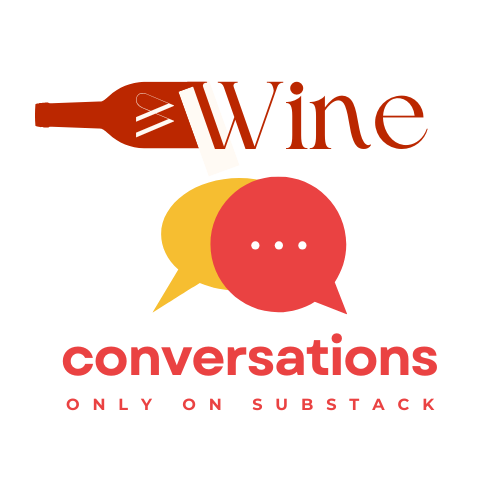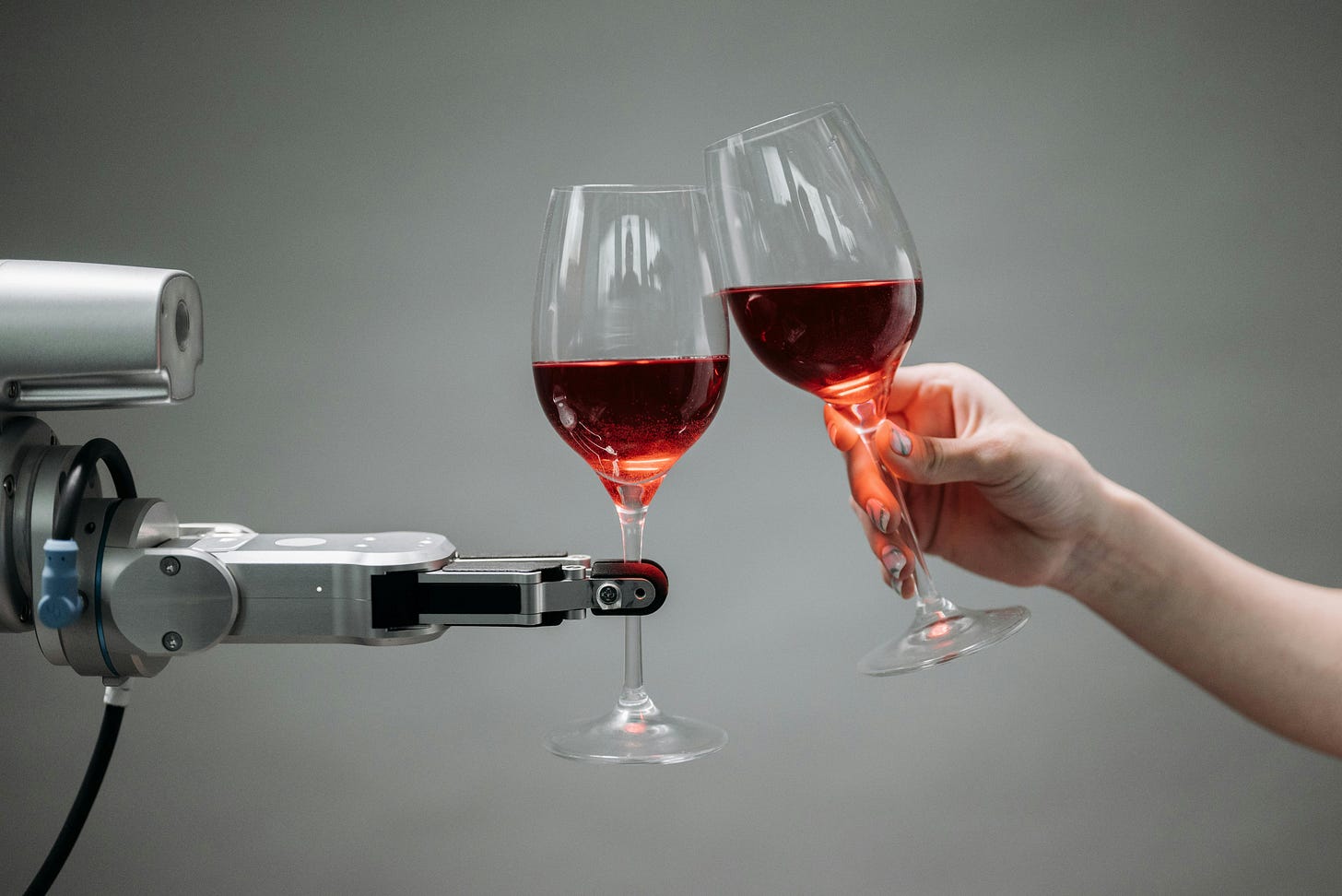Wine Conversations: Can AI Replace Somms? (II)
My take: No amount of artificial intelligence can replace the power of a human’s ability to emote how a wine tastes, smells, and makes them feel.
Can I be honest?
The AI trends that have taken over social media have been grinding my gears.
Have I tried one or two of them? Sure, you want to know what REALLY sours my grapes? People are failing to realize that these machines (Claude, ChatGPT, and others) are hoarding your likeness for future use.
About a week or so ago, I saw a wine negociant using AI to promote their wine brand on Instagram. They were creating ideal scenarios where their wine could be enjoyed with their “target consumer” sipping, laughing, and enjoying their wine. While it seems to be a way to attract a certain demographic, it ultimately creeped me out and feels like a lazy, unrealistic marketing tactic.
It’s one thing to use AI to make systems and processes more effective, but it’s a whole other thing to rely on AI to create things that can and should be made from human creativity.
As I was outlining this post last night, I came across a brilliant IG story rant about AI and wine from New York City-based award-winning advocate, author, and sommelier @Miguel de Leon.
(If you aren’t familiar with the force that is Miguel, read his James Beard Award-winning feature story “It's Time to Decolonize Wine" and thank me later. )
The more I clicked through his story, the more I thought, “Has he pitched a tent in my head? Because I was JUST about to write about this very subject on Substack!”
Miguel was dropping gems left and right in his stories, and I asked for his permission to use a few of those quotes, which I will share shortly.
Wine is meant to be enjoyed in real time with real people–FULL STOP. If we start relying on AI to tell us how we think and feel about a Cabernet Sauvignon from California or Vinho Verde from Portugal, then I’m afraid we’ve lost the plot entirely.
Which leads me to my first point.
1. AI can help you craft that clever social media marketing copy or build that story outline, but those computerized words lack human intellect, experience, and critique.
Yesterday, I shared my travels to Boise, Idaho, highlighting the things I ate, drank, and did over four days. I remain grateful for the experience and look forward to telling more family and friends about how awesome Idaho is as a travel destination.
Now, can a computer create a travel guide for you? Of course it can! But that guide might not have the real-life experience of walking Downtown Boise and conversing with an amazing group of individuals who attended the only Black church in Boise. It also won’t have the ability to tell you how delicious a 10-minute martini tastes after a long travel day. But if you want to know the best place to get a gluten-free donut that looks like and tastes better than anything Homer Simpson has, please ask ChatGPT right away!
2. We need artists to create colorful labels for the wine we love!
There’s something to be said about the designs of wine labels and the artwork that is commissioned to create them. You can scan the shelves of any wine shop or grocery store and see how the art on
This morning, I had breakfast with Breck O’Neill, the Executive Vice President of Business Development for O’Neill Vintners and Distillers. As we were tasting through some of the wines currently in the Chicago marketplace, he put the spotlight on the Rabble Wine Company 2023 Rosé.
Notes of puckery strawberry, watermelon, and raspberry with a beautiful bouquet, this certified porch-pounder is available at Jewel-Osco and Whole Foods locations throughout Chicagoland.
A cool interactive moment for the consumer: scan a QR code that will prompt you to scan the label and see this:
BUT PEEP THIS: AN ARTIST HAD TO CREATE THAT for the brand to deem it plausible to create such a dope experience.
I don’t mind AI being used to enhance storytelling, because sometimes technology can do what the human body can’t (like tell the story of a wine IRL in the aisle of a grocery store). I think as we think about how we implement AI into our wine work, we have to be intentional and not neglect the power of our brains to think, create, and execute ideas.
“There are a lot of things we attach to wine when it comes to cultural value and cache. Artfulness is one of those things. And art is a human form that you cannot shortcut.”
- Miguel de Leon
And on to my final point…
3. HUMAN CONNECTION is crucial to the enjoyment of fermented grape juice.
And this is the most IMPORTANT point.
From the hard-working folks in vineyards, wineries, and tasting rooms to the sommeliers on restaurant floors, in retail shops, and at private gatherings, PEOPLE MAKING, POURING, SELLING, AND PROMOTING WINE MATTER.
But more than that, a human can help you to gain more information about a wine region’s soil composition and climate, the grape variety’s finicky qualities, and what food to perfectly pair with a glass of Cremant, Cava, or Champagne.
“Empathy and compassion cannot be put into an algorithm. Humans make decisions for winemaking, and winemaking looks a lot like being a human being.”
- Miguel de Leon
And in the words of my good friend Taj Rani (who is celebrating a birthday today and is also the author of
), THAT’S THAT ON THAT.



This is lowkey terrifying
Thank you for discussing this! AI does much more harm than good, and we stand to lose our humanity to this technology. Thank you for speaking up for the value of human creativity and connection!